It’s an Attwood SL34605 (same as SL34601) 20″ extended, 12″ compressed, 60lb force.
Lagoon 43 Power Cat Propellor Shaft Replacement
Our starboard propellor shaft was damaged when the thrust bearing retaining nut came loose and/or failed. The shaft was spinning against the retaining nut and/or other internal parts, wearing it down. It cost about $3,800 (in 2024) to have a P&V Machine Shop in Dickinson, TX make a duplicate of our shaft. They used Aquamet® 19 stainless steel that was ordered from Virginia. We were surprised the cost was this high but we have not researched other shops or material options.
Repair of the shaft was an option. This involves machining off material, welding material back, then machining that result. The trouble with this approach is 1) it’s not cheap either, around $1600, and 2) it’s difficult to end up with a totally straight shaft because the heat of welding causes it to bend.
Repair and Parts Info for Thrust Bearings on Lagoon 43 Power Catamarans
Disclaimer: I own a 2004 Lagoon 43 Power Cat, owner’s edition. I am not affiliated with Lagoon in any way, and I am not a professional boat mechanic. I do a lot of research on repairs and upgrades to my boat, and I am sharing my learnings freely here. They may contain errors or not match your boat. Use them at your own risk.
As of late 2024, an entire thrust bearing assembly cost around $2,350 from a Lagoon / Beneteau dealer. (I have used St. Barts Yachts to research and order Lagoon parts.)
In my case, the interior parts of the thrust bearing assemblies were trashed, but the bearing housings were (to my surprise) ok. We measured and researched all the parts that go into the thrust bearings, ordered the parts online, and the shipyard rebuilt them on the bench. Total cost for parts for two thrust bearing assemblies was ballpark $500 with expedited shipping. Note the prices shown on motion.com are list prices and after creating an accounting / signing in, you will see lower prices.
All of these parts are made by SKF. Each seal is doubled up in each bearing (2 fwd 2 aft seals in each bearing assembly). Depending on the condition of your bearing, you may not need all of the parts listed, but these parts are not expensive, and you may want to go with new while you have it apart. Your lock nut may be damaged if your bearings have failed or the prior tabbed lock washer has come loose. More importantly, your shaft may be damaged if it was riding on the nut or other parts after failure. See this post about the shafts. The tabbed lock washers are typically not reused because the tab is only meant to be bent once.
Qty means the number needed to rebuild on thrust bearing assembly. Double the quantity if rebuilding both port and starboard thrust bearings.
Here are the internal parts in order from fwd to aft.
| Where Used Description | Mfg Part Number Qty Link to Purchase |
| Fwd Shaft Seals Single Lip Oil Seal – Solid, 40 mm Shaft Dia., 62 mm OD, 7 mm Overall Width, HMS5 Design, Nitrile Rubber (NBR) Lip Material | 40X62X7 HMS5 RG Qty: 2 motion.com |
| Retaining Nut KM Series Bearing Lock Nut – M45x1.5 mm Thread Size, 65 mm OD, 56 mm Face Dia., 10 mm Width, Steel | KM 9 Qty: 1 motion.com |
| Tabbed Locked Washer MB Series Bearing Lock Washer – 45 mm ID, 69 mm OD, 56 mm Face Dia., Steel Material | MB 9 Qty: 1 motion.com |
| Fwd and Aft Thrust Bearings Tapered Roller Bearing Assembly – 45 mm Bore, 75 mm OD | 32009 X/Q Qty: 2 motion.com |
| Aft Shaft Seals Single Lip Oil Seal – Solid, 50 mm Shaft Dia., 85 mm OD, 10 mm Overall Width, HMS5 Design, Nitrile Rubber (NBR) Lip Material | 50X85X10 HMS5 RG Qty: 2 motion.com |
Here are some work-in-progress instructions on how to replace the thrust bearings. This is not a small job.
To share knowledge, corrections, or resources related to this topic, please email me at my first name @aardsma.com. Thanks, Mark.
See this PDF for full shop drawings about the Lagoon 43 thrust bearing assembly and propellor shaft (in French). Thanks to Mark Kitchens for providing that drawing and much other helpful info.
See also: Lagoon 43 Power Cat Propellor Shaft.
KCMI Champaign, IL Airport ATC Audio Stream
I enjoy listening to the pros at Air Traffic Control do their jobs so well. I have setup a ATC scanner that covers these channels and streams at:
http://audio.aardsma.com:8000/kcmi-atc
| Freq | Description |
| 121.8 | Champaign Ground |
| 121.35 | Champaign Approach (North) |
| 132.85 | Champaign Approach (South) |
| 120.4 | Champaign Tower |
| 128.75 | Champaign Clearance via Chicago Center |
| 123.0 | C16 Frasca Airport CTAF |
| 122.95 | Champaign Unicom |
| 133.975 | Champaign Departure Secondary |
Feel free to listen and share. On desktop you can listen in browser or iTunes, etc. On iOS FStream or VLC apps work nicely, just enter the streaming URL above under network streams.
Charging Stratus 3 from a USB-C Port
The Appareo Stratus 3 has a USB-C connector on the device, and comes with a USB-A wall charger and a USB-A to USB-C charging cable. It seems intuitive that one could also charge the Stratus 3 from a USB-C port or charger, but Appareo tech support confirmed to me this does not work.
Since the world is moving to USB-C and I am preparing to install USB power ports in my aircraft panel, I wanted to know if I could install only USB-C ports in the panel, and charge the Stratus 3 from one of those ports with some combination of adapters and cables.
I confirmed the Stratus 3 will not charge from a USB-C to USB-C cable from a USB-C port. No charge light at all. Tech support was correct.
For a base reference point, I connected the wall charger and USB-A to USB-C cable that came with the Stratus, and found ~5V, 1.1A for about 5.5 watts of charging power flowing to the device.
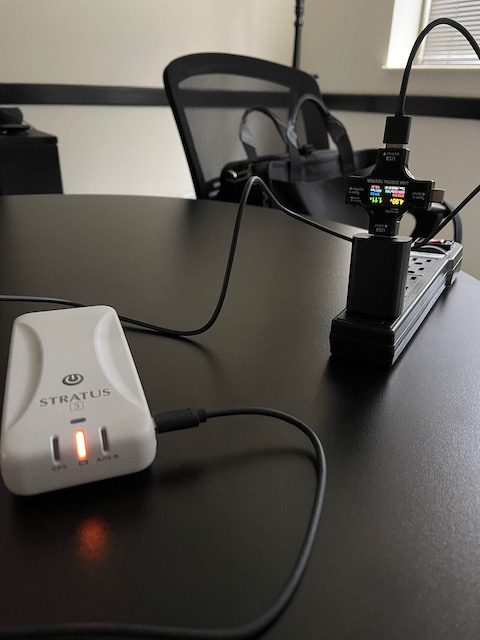
I tested a USB-C to USB-A adapter (this one from Amazon, I do not receive commissions) plugged into a USB-C port, and the included USB-A to USB-C charging cable from Stratus, and the charge light lit normally. A USB tester showed 5 volts, 1.2 amps for about 6 watts of charging power. I connected my iPad to the Stratus while powered in this way, and it showed connected, Genuine Stratus: Yes, all appeared well.
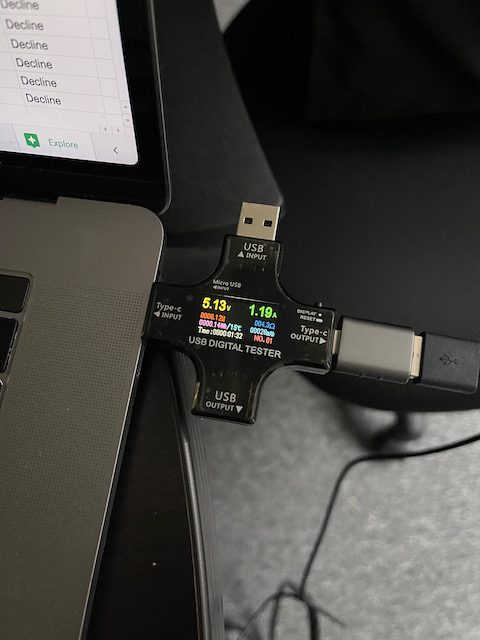
I tested this same setup with a variety of USB-C sources. My macbook, my macbook’s USB-C charging brick, and a cigarette lighter USB-C charger in my car. All worked and charged the Stratus 3 normally, at about the same 6 watt rate.
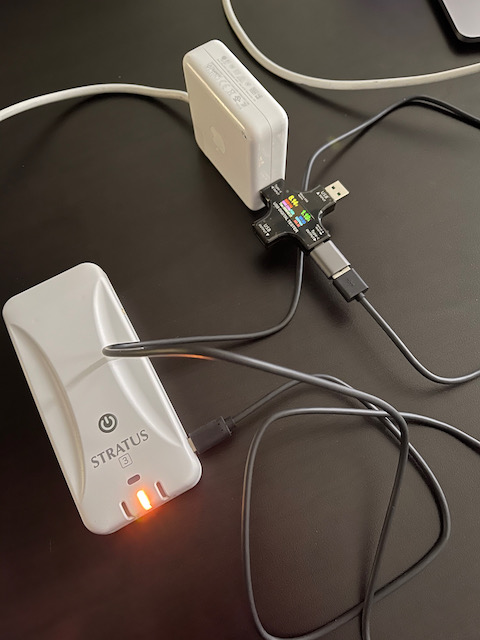
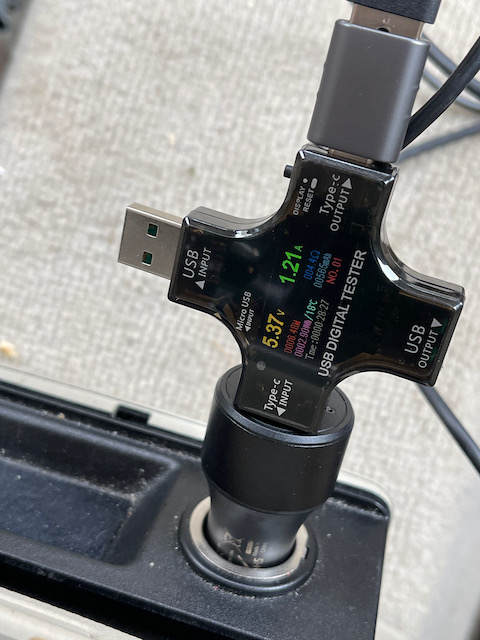
Bottom line, yes, it works. There appears to be no need to install a USB-A port in your airplane to power the Stratus 3, modern USB-C ports with an adapter will work just fine.
P.S. Unfortunately, my plan to use the Stratus 3 simultaneously with Foreflight and XAvion (for real-time emergency glide preparedness) appears it will not work. Yes, the Stratus 3 supports the open GDL-90 protocol, but ForeFlight will not enable the Stratus when open mode is enabled. So it appears one can use the Stratus 3 with multiple devices at once, but all devices must be either running ForeFlight, or all devices must be running a non-ForeFlight app. We can’t mix and match. Not cool ForeFlight, not cool.
Cessna P210N ARC Autopilot G-Switch Location
These mechanical accelerometers wear over time and can cause unexpected autopilot disconnects.
On the P210N (and I’m guessing other Cessna 210 models) it’s located under the copilot’s seat. A round access panel with 6 screws comes off the floor, and the g-switch is located inboard of that panel. 4 screws through the floor hold the g-switch in position.
There’s a D-Sub connector on the g-switch. Pins 1 and 9 are part of the interlock loop that must be closed all the way through to keep the autopilot connected. If the g-switch is suspected of breaking the loop, you can temporarily jumper pins 1 and 9 to test the autopilot without the g-switch removed from the interlock.
Randy @ Auto Pilots Central in Tulsa, OK is an expert on this autopilot, and can repair the g-switches.
Airplane Camping at 6Y1 Bois Blanc Island
Bois Blanc Island airport has beautiful weather in the summer, and a nice little camping area. I just flew in and spent a night there. It can be a little tough to find information about their camping setup, so here’s a quick rundown.
- The runway is paved and in great condition. There is no fuel, attendant, or maintenance service there.

- There’s a small paved area for aircraft parking, with tie downs in the grass off the east and west sides of the payment. Little wind was forecast during our stay, so instead of tying down, we kept the wheels on the pavement and chocked them.
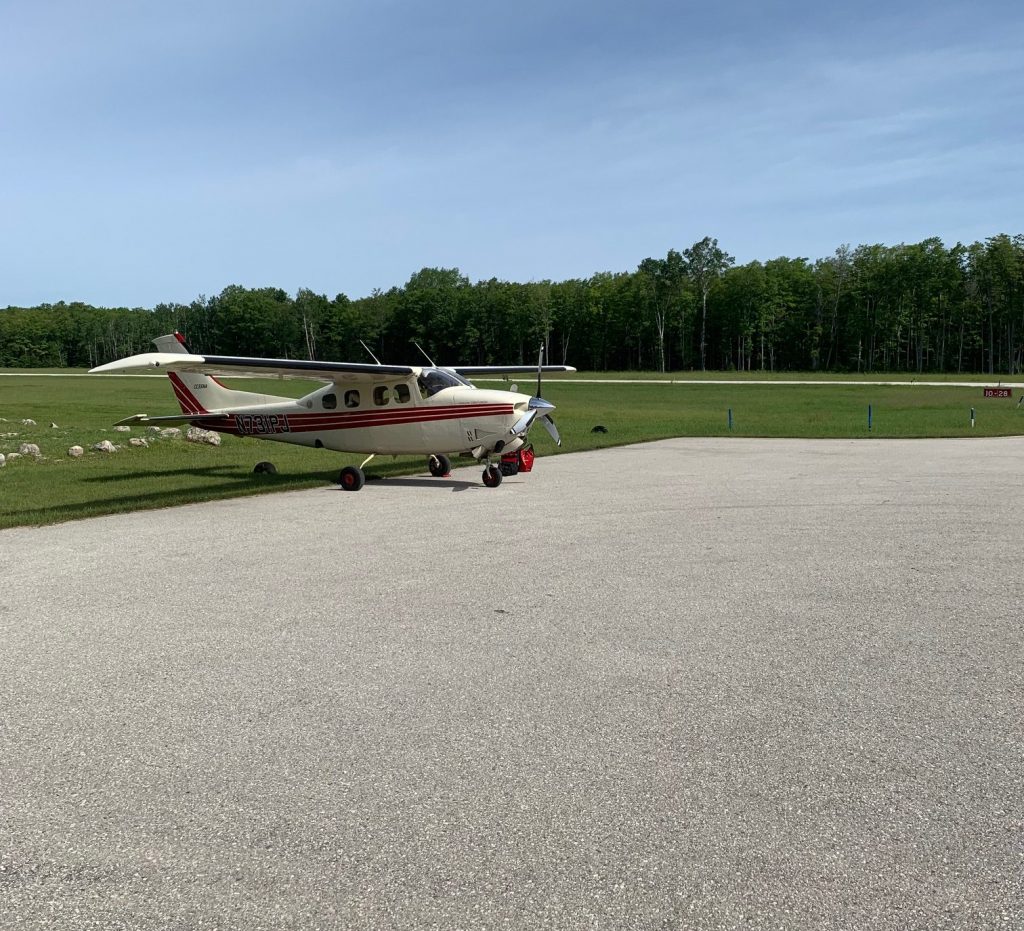
- A few minutes after parking, the mosquitos found us. Most important Bois Blanc camping note: Bring bug spray. We hit them with chemical warfare the whole time we were there, and they still won a few rounds. Didn’t spoil our time, but definitely a factor in the month of June at least. I’m told they are normally bad, and this particular year they were worse than usual.
- There’s a nicely-appointed camping area near the South-West corner of the gravel (car) parking lot. It has a fire ring, two nice picnic tables, a hand pump water well, and an outhouse. Ground was soft and mossy where we set our tent. The water from the hand pump is drinkable, but looked a bit cloudy, so we stuck with drinking water we brought with us.
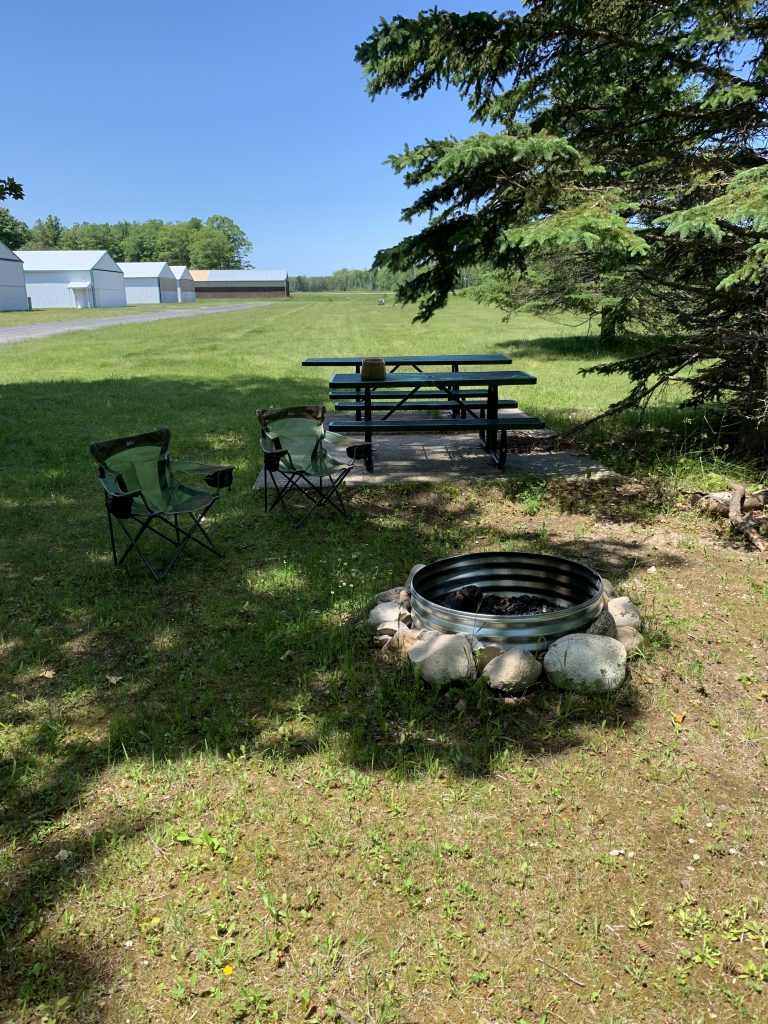
- The airport terminal building was unlocked, and has one restroom. Way nicer than the outhouse. (Mosquitoes lurk in the outhouse, I think they figure you have to go in there eventually. Trust me, use the indoor bathroom if you can.) During our stay nobody locked the terminal — we had access all night. But don’t know if that’s normal or not.
- Before lighting a campfire you need to obtain permission from the local fire department. Depending on dryness and winds that day they may or may not approve it. Call or text any of the fire department folks and they’ll give you an answer. There’s no physical permit, just a verbal permission.
- Speaking of calling and texting, we had little to no cell signal at the airport from Verizon or AT&T. Near the west end of runway 28 it was a little better. As we bicycled toward the southern end of the island it also got better in spots.
- Speaking of bicycling, we brought our Dahon folding bikes in the airplane. These have small and thin tires. The roads on the island are not paved, but they are well taken care of and on this day, dry enough to work ok. Mountain bike tires would be better.
- There’s a convenience store slash diner slash real estate office called Hawk’s Landing. It’s about a 4 mile bike ride into town. Not far past that is the city’s marina, where the ferry docks. The ferry runs back and forth from the mainland a few times a day, depending on the month.
- The airport has a green/white rotating beacon not far from the camping area. If you don’t put your tent where the pine trees shade it from the beacon, it will flash on your tent all night long. Mesmerizing, or annoying, depending on who you ask.
- The airport manager had apparently changed recently, and the position was vacant when we visited. It was hard to get ahold of anyone to answer questions. Eventually someone from the airport board called me back, and they were very friendly and helpful. You can give this page a shot to see if the latest airport manager info is posted.
All in all Bois Blanc is a great place to take the airplane and camp, when you want to get away from it all.
Champaign-Urbana Blues Dancing
A new interest of mine. I’ve joined a group that’s been doing blues dancing for years. What is blues dancing? It’s an African-American vernacular dance to blues music, started 100 years ago.
We are getting organized with a web site, not-for-profit organization, and the whole shebang.
Cessna P210N Door Seal Parts, 2117100-26 and R860076
Note: The Bob Fields Aerocesseries company used to sell a powered inflatable door seals product. The company is taking money and not shipping product. They will ask for wired money, then never answer their phone or get back to you. Steer clear!
Update as of January, 2020: Tom Langeland and TALCO products have acquired the Bob Fields company. Although Tom is not legally responsible for the past actions of the prior owner, he is working to straighten out situations that occurred and restore good will. I will update this post once I learn more.
Cessna no longer supplies door seal assemblies for the P210N. Here’s some info that may help other searchers. [This was true as of the original date of this post, I am unsure of Cessna has resumed stocking these.]
The original emergency door seal assembly is part number 2117100-26 composed of a 48-inch rubber seal Part Number R581575 and a 3-inch splice Part Number R860076. The seal is available from Cessna parts distributors as bulk material by the foot, under that part number R581575.
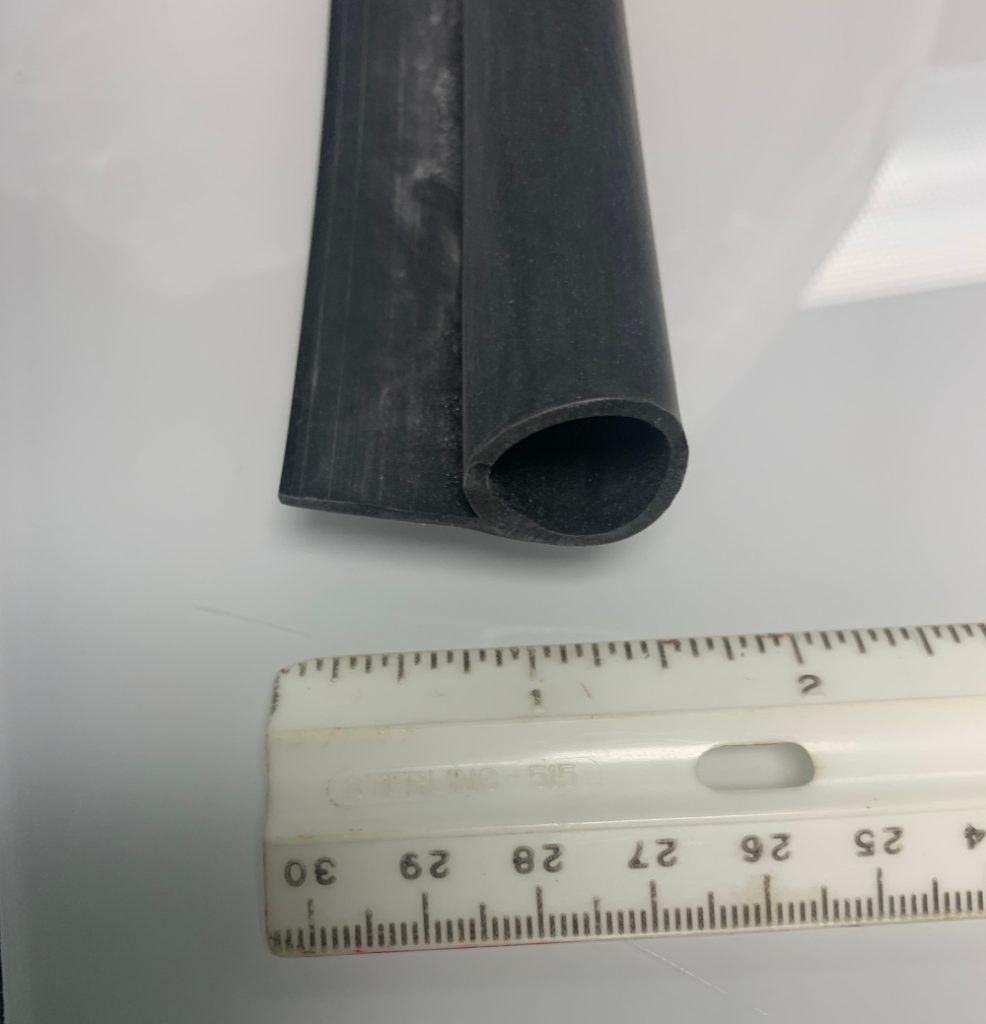
The bulk material is used to create a seal that has holes (a series of small perforations) on the cabin-facing side to allow cabin pressure to pressurize the seal in flight. The bulk material does not come pre-perforated and Cessna instruction is “Cut to 98.00 inch length, (3) cutouts and drill (12) 0.125 holes (S23701). Use your old seal as a pattern.”
The 3-inch splice is not available from Cessna (as of this posting). Per Cessna support, the splice is a 3-inch piece of neoprene tube that is .62 OD, wall thickness of .090. The specification for it is ASTM D-1056. It should be glued into the seal to splice it, using RTV sealant.
We were able to source a 50-foot roll of neoprene tube from Ace Hose that appears to fit the bill. Their full description and part number: Black Commercial Grade Neoprene Tubing-3/32″ Wall 7/16″IDx50′ (9507-01107).
We only need 3 inches. Send me an email at my first name @aardsma.com if you want a free piece.
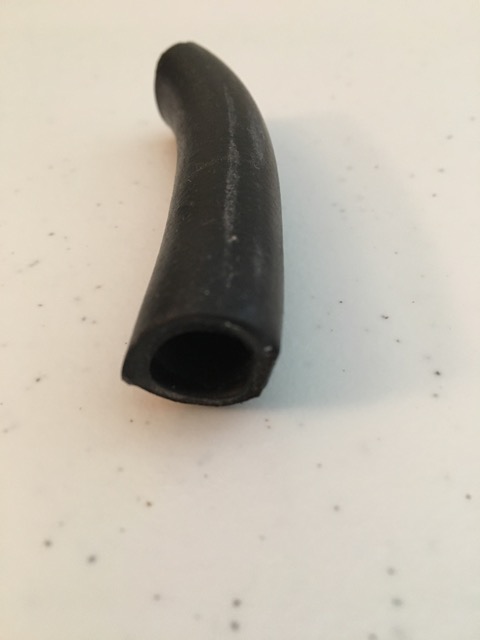
No warranties or guarantees implied on the above info or the material we sourced.
Cessna P210N POH
For prospective buyers and those without an electronic copy… these are hard to find anywhere.
I have a scan of my POH from N731PJ 1980 P210N Serial 523. Obviously it may not be applicable to any other aircraft in question. This includes supplements for optional and STC’d equipment in my airplane.
Should be useful for general reference. Not for use in flight planning or any regulated purpose.
Download it at: http://www.marksetcetera.com/N731PJ-P210N-POH.pdf.